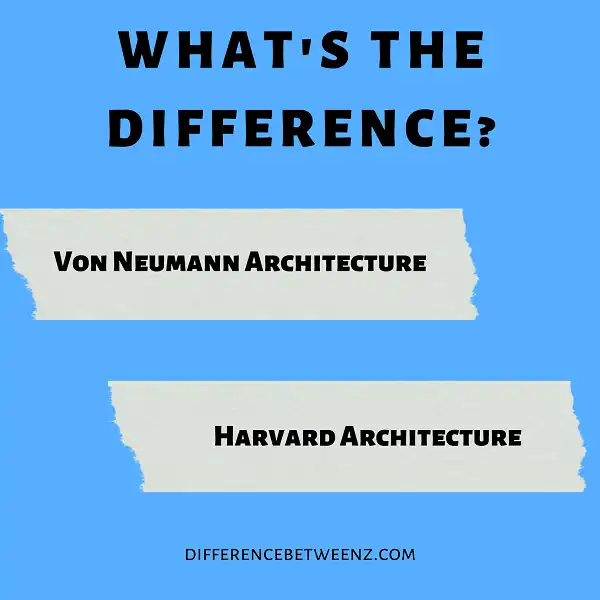The von Neumann and Harvard architectures are two of the most commonly used computer architectures today. But what is the difference between them? In this blog post, we will explore the differences between these two architectures and discuss which one is better suited for different applications.
What is Von Neumann Architecture?
- Von Neumann architecture is a computer design model that uses a processing unit and a single memory to store both instructions and data. The Von Neumann model is named after mathematician and early computer scientist John Von Neumann.
- Von Neumann architectures are used in almost all modern computers. One of the key features of Von Neumann architecture is that it allows for the separation of storage and processing.
- This means that data and instructions can be stored in the same memory location, which reduces the amount of memory needed. Von Neumann architectures are also relatively simple to build, which makes them ideal for mass production. While Von Neumann architectures are not perfect, they have proven to be highly effective and reliable over the years.
What is Harvard Architecture?
Von Harvard architecture is a type of computer architecture that separates instruction and data storage and retrieval. The term is used in reference to the Von Neumann architecture, which stores both instructions and data in the same memory unit. The Von Harvard architecture typically consists of two separate memory units, one for storing instructions (known as code memory) and one for storing data (known as data memory).
This separation allows for more efficient use of memory, as instructions can be executed directly from code memory without first having to be loaded into data memory. Von Harvard architectures are often used in embedded systems, where code and data sizes are typically small and memory usage is a key concern.
Difference between Von Neumann and Harvard Architecture
Von Neumann and Harvard architectures are both ways of designing computers. The Von Neumann architecture was developed first and is named after the mathematician who came up with it, John Von Neumann.
- Harvard architecture was developed later and is named after the university where it was invented, Harvard University. Both architectures have their own advantages and disadvantages.
- Von Neumann architecture is simpler and easier to design, while Harvard architecture can provide better performance because it can fetch and execute instructions at the same time.
- However, Von Neumann architectures are more common because they are easier to design and build. Harvard architectures are less common but are used in applications where speed is critical, such as in video processing or signal processing applications.
Conclusion
So, what is the difference between Von Neumann and Harvard architectures? The Von Neumann architecture was designed for a single user to run one program at a time. The Harvard architecture allows multiple users to run multiple programs simultaneously.


